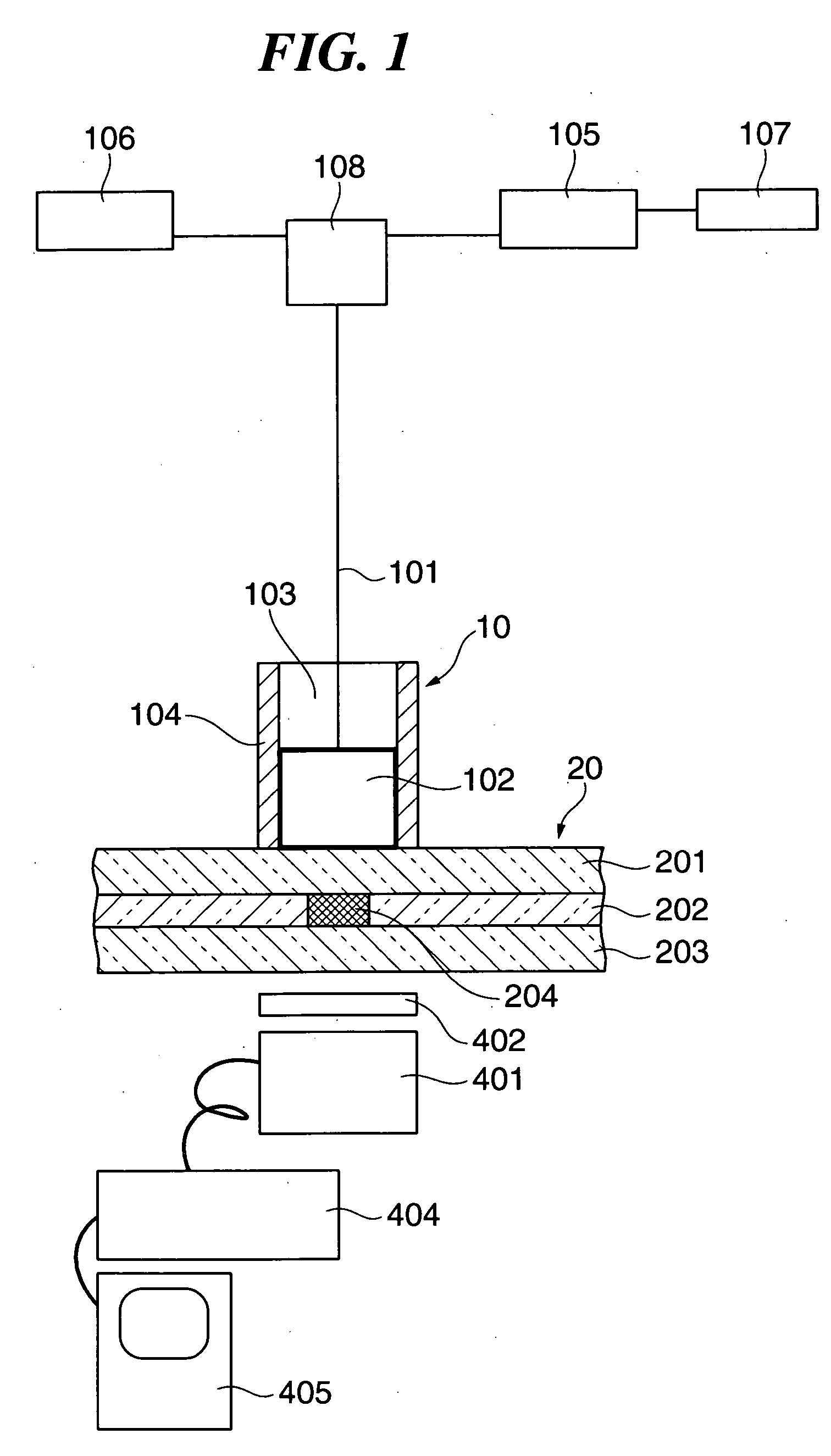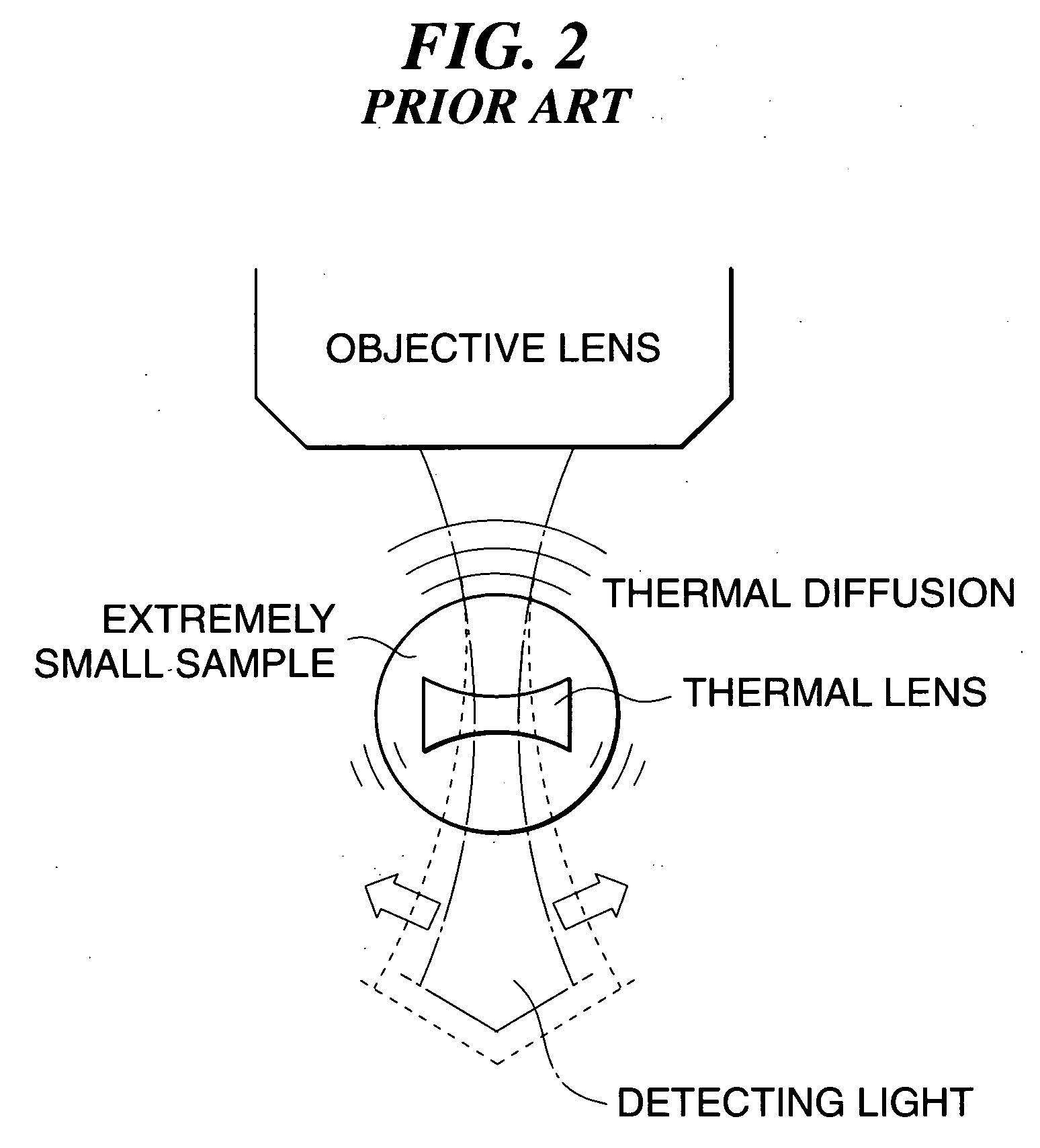Photothermal conversion spectroscopic analysis method and microchemical system for implementing the method
a technology of microchemical systems and spectroscopic analysis, applied in the direction of phase-affecting property measurements, instruments, measurement devices, etc., can solve the problems of vacuum required, sample broken or damaged, and what is actually used as such an optical microscope is limited to a laser fluorescent microscope, and achieves high sensitivity
- Summary
- Abstract
- Description
- Claims
- Application Information
AI Technical Summary
Benefits of technology
Problems solved by technology
Method used
Image
Examples
Embodiment Construction
[0044] The present invention will now be described with reference to the drawings showing a preferred embodiment thereof.
[0045] As a result of assiduous studies, the present inventors have found that in the photothermal conversion spectroscopic analysis method to be applied to a microchemical system, the intensity of detecting light depends on the relationship between the difference in focal position between exciting light and detecting light and the depth of a channel.
[0046]FIG. 1 is a schematic view showing the entire construction of a microchemical system according to an embodiment of the present invention. In FIG. 1, the microchemical system has an optical fiber 10 having a lens built therein (hereinafter referred to as the “optical fiber with lens 10”). The optical fiber with lens 10 has an optical fiber 101 inserted therein from a rear end thereof (the upper side as viewed in FIG. 1), for propagating exciting light and detecting light in a single mode. The end of the optical...
PUM
| Property | Measurement | Unit |
|---|---|---|
| depth | aaaaa | aaaaa |
| depth | aaaaa | aaaaa |
| refractive index | aaaaa | aaaaa |
Abstract
Description
Claims
Application Information
 Login to View More
Login to View More - R&D
- Intellectual Property
- Life Sciences
- Materials
- Tech Scout
- Unparalleled Data Quality
- Higher Quality Content
- 60% Fewer Hallucinations
Browse by: Latest US Patents, China's latest patents, Technical Efficacy Thesaurus, Application Domain, Technology Topic, Popular Technical Reports.
© 2025 PatSnap. All rights reserved.Legal|Privacy policy|Modern Slavery Act Transparency Statement|Sitemap|About US| Contact US: help@patsnap.com



